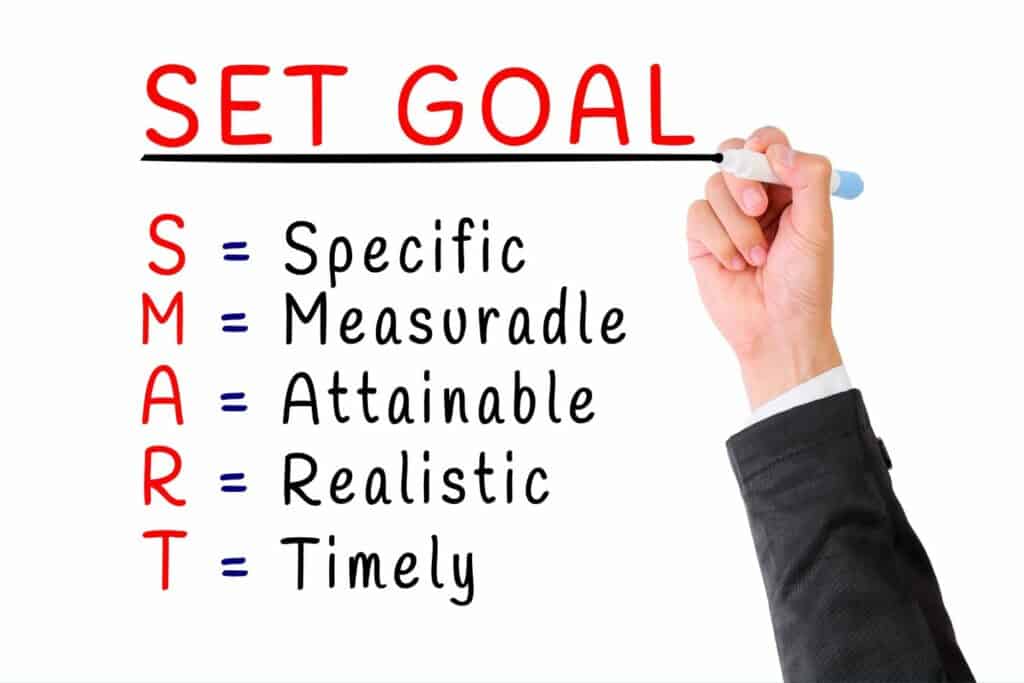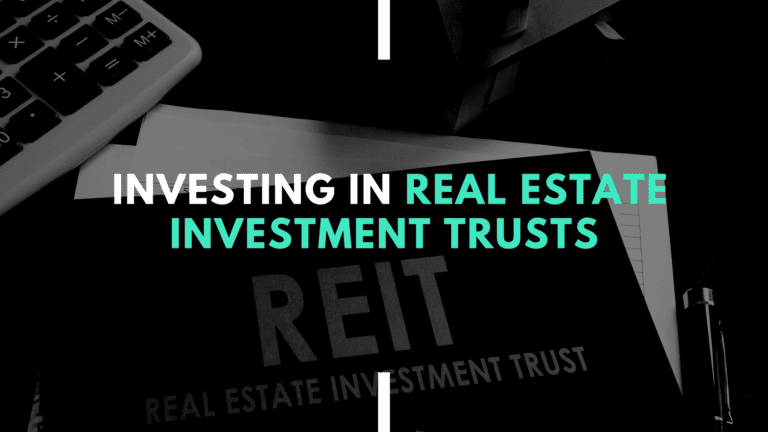Six “Can’t-Miss” Real Estate Investing Tips for Retirees
Are you a retiree looking for a safe, reliable investment opportunity? Real estate investing may be the perfect solution for you!
It requires minimal effort and can provide significant returns on your investments. However, choosing the right type of real estate investment can seem like an overwhelming task. That’s why we’ve put together this comprehensive guide to help you make informed decisions while navigating the world of real estate investing as a retiree. Here, we will discuss key factors such as cash flow potential, property risk management, and tax benefits – everything prospective investors should know before entering a real estate venture. So get ready to dive in and uncover all the tips, tricks, and advice to set up your retirement portfolio for success!
1. Know Your Goals
Identify what you hope to achieve with your investments, and be sure to set realistic expectations.

Knowing what you aim to accomplish with your investments is like setting the destination for your GPS. It’s a crucial step when deciding where and how to invest. So, it’s essential to set specific financial objectives. Maybe you’re aiming for a particular return rate or have your eye on a specific real estate asset that you hope to purchase within a certain timeframe.
| Financial Goals Examples |
|---|
| 1. Achieve 8% return rate |
| 2. Purchase 3 residential properties by 2025 |
| 3. Generate a passive income of $4000 monthly |
| 4. Build a real estate portfolio worth $1 million in the next 10 years |
👉 Pro Tip: Clear financial goals can help you stay focused and motivated, even when the market gets tough.
Doing Your Homework
Once your goals are all lined up, it’s crucial to start factoring in market conditions and current trends. Dive deep into research and analyze past performances of the investment sectors that interest you. This will provide valuable insights and guide you in making data-driven decisions.
Forecasting and Realistic Expectations
Finally, while we can’t predict the future with absolute certainty, as savvy investors, we should always consider potential future events. Set realistic expectations based on both your research and analysis.
| Considerations for Setting Expectations |
|---|
| 1. Market volatility and economic downturns |
| 2. Changes in government policies or regulations |
| 3. Area-specific factors like demographic shifts, new infrastructural developments |
| 4. Impact of technological advancements on real estate sector |
👉 Pro Tip: Your expectations should be adaptable. Be prepared to adjust your investment strategies if circumstances change.
Implementing the SMART (Specific, Measurable, Achievable, Relevant, and Time-bound) method to your investment goals will lead you toward successful investing. And, significantly, it will lower the risks of stepping into the market. After all, being a strategic real estate investor means planning your steps wisely and adapting quickly to whatever comes your way.
Knowing what you hope to achieve with your investments can be one of the most important steps when deciding where and how to invest. It’s vital to articulate specific financial goals, such as an expected return rate or buying a particular asset by a specific time frame. Once these goals are outlined, it’s essential to factor in market conditions, current trends, and research into past performances. Additionally, you should consider potential future events and set realistic expectations based on research and your analysis. Doing this will help put you on the path toward successful investing while lowering the risks of entering the market.
2. Understand Investment Risk
Be mindful of the potential risks and create a well-diversified portfolio.

Understanding the risks involved is critical, no matter what kind of investments you’re eyeing – be it real estate, stocks, bonds, or startup equity. We all wish for our investments to yield stellar returns, but being aware of the potential pitfalls is equally crucial. After all, successful investing isn’t just about maximizing profits; it’s also about smart risk management.
Crafting a Diversified Portfolio: Your Safety Net
A balanced approach to managing investment risk is to create a well-diversified portfolio. This portfolio should be a mix of low-risk and high-risk assets. Diversification acts like an insurance policy against market downturns. Your other investments can cushion the impact if one asset type or sector takes a hit. This way, we can mitigate the downside while still enabling us to reach our financial goals with a higher probability of success.
| Potential Portfolio Components |
|---|
| 1. Low-risk assets (Government Bonds, Money Market Funds) |
| 2. Medium-risk assets (Blue-Chip Stocks, Real Estate) |
| 3. High-risk assets (Emerging Market Stocks, Startup Equity) |
Pro Tip: Don’t put all your eggs in one basket. Diversification can help spread risk and potentially increase your overall returns.
Knowledge is Power: Building a Long-term Strategy
Getting to grips with investment risk before making decisions is the cornerstone of constructing a robust long-term strategy. Not all investment opportunities are created equal, and the ones that seem the most appealing may also carry the highest risks. By understanding the risk-return tradeoff and tailoring your portfolio accordingly, you can navigate the financial seas with more confidence and peace of mind.
👉 Pro Tip: Periodically review your investment portfolio to ensure it aligns with your risk tolerance and financial goals. Set a reminder on your calendar at least once a month to review your investments and their percentage of portfolio to rebalance as needed
3. Save Smartly
Start saving to have enough cash reserves to cover unexpected costs or emergencies.

In the world of savings, there’s a golden rule that stands head and shoulders above the rest – start as soon as possible. Setting aside monthly money lays the foundation for a robust financial safety net. This allows you to comfortably handle unexpected bills or emergency expenses without jeopardizing your financial stability.
| Savings Milestones |
|---|
| 1. Cover 3-6 months of living expenses |
| 2. Create a fund for unexpected bills or emergencies |
| 3. Allocate funds for future investment opportunities |
Pro Tip: Automate your savings by setting up a monthly transfer to your savings account. Out of sight, out of mind!
Nurturing a Cash Reserve: Your Financial Safety Net
Building a sufficient cash reserve is like donning a financial armor – it equips you to face whatever curveballs life throws. Not only does it provide you with a sense of financial security, but it also affords you the flexibility to seize promising investment opportunities as they arise.
Pro Tip: The size of your cash reserve should be guided by your personal circumstances – including your income stability, monthly expenses, and financial goals.
Making Your Money Work For You
A healthy savings habit doesn’t just safeguard your finances – it’s the first step towards making your money work for you. With sufficient savings, you can leverage lucrative investment opportunities and future plans, transforming your hard-earned money into a wealth-building tool.
Pro Tip: Consider investing your savings in low-risk interest-bearing assets such as bonds or high-yield savings accounts to grow your wealth further.
In conclusion, ensuring your finances are secure and starting your savings journey today can propel you toward your financial goals at an accelerated pace. Remember, every dollar saved is a step closer to financial freedom and success in your real estate investing journey. It’s never too late – start saving smartly today!
4. Research Thoroughly
Do your research on the local market and understand how different investments work

In the intricate world of real estate investing, a well-informed decision is the bedrock of successful outcomes. Conducting meticulous research isn’t just an option—it’s a necessity. This research journey paves the way for sound investment choices, helps to mitigate risks, and empowers you to seize golden opportunities as they arise. So, let’s delve into why a comprehensive research process is crucial.
Pro Tip: Never underestimate the power of research. Your research will act as the compass, guiding your real estate investment decisions.
Decoding Property Types: Know What You’re Investing In
The first step in your research journey involves understanding different property types. From residential properties like condos and single-family homes to commercial properties such as retail spaces and offices, each property type has unique characteristics, benefits, and risks.
Types of Properties | Pros | Cons |
|---|---|---|
Residential Properties | Stable income, lower risk | Property management can be time-consuming |
Commercial Properties | The larger initial investment, sensitive to economic conditions | The larger initial investment sensitive to economic conditions |
Industrial Properties | Long lease contracts, less management | High maintenance costs, location-dependent |
👉 Pro Tip: When choosing the type of property to invest in, align your decision with your risk tolerance, investment goals, and the level of involvement you’re willing to commit.
Locating Your Investments: Understanding Where to Invest
The second facet of your research should focus on location. The ‘where’ of your real estate investment can significantly impact the property’s value and your potential return on investment (ROI). It’s important to assess factors like local market trends, neighborhood demographics, infrastructure developments, and economic indicators of the area.
👉 Pro Tip: Location is a key determinant in real estate investment. The mantra ‘location, location, location’ holds very true in this scenario.
Mastering Due Diligence: A Critical Step to Success
Thorough research culminates in performing due diligence—a comprehensive property investigation before finalizing the deal. This includes assessing the property’s condition, reviewing legal documents, analyzing financial data, and ensuring no hidden liabilities.
In conclusion, thorough research plays a pivotal role in real estate investing. It provides a solid understanding, helps you navigate potential pitfalls, and propels you to make informed, profitable investment decisions. As the saying goes, “Knowledge is power,” in real estate investing, your knowledge is your most valuable asset.
5. Get Professional Advice
Seek advice from financial professionals to help guide you in making wise decisions.

Professional advice is a great way to help you make intelligent financial decisions. Financial professionals can analyze your financial situation, assess the current economic climate, and recommend the best options to grow your wealth. Furthermore, they have forward-looking insights that can help you plan long-term investments or purchase big-ticket items such as homes or cars. If you’re unsure where to start regarding financial planning, getting expert advice is an excellent way to handle your finances.
6. Re-evaluate Your Portfolio Regularly
Regularly review your investments and make adjustments as needed for optimal performance.

It is essential to monitor your portfolio’s performance regularly to maximize profits. A good rule of thumb is to review the state of your investments at least once every six months, taking into account any changes in the market and your objectives for the portfolio.
This assessment may reveal areas of risk or potential growth you were unaware of and allow you to adjust accordingly. In terms of timing for these reviews, investing experts suggest harvesting gains as quickly as possible by bringing them back into cash as soon as they appear–this provides an opportunity to reinvest according to more informed decisions. While successful long-term investment strategies involve patience, it is crucial that you do not neglect to manage and fine-tune your investments regularly.
Investing is a great way to grow your wealth and prepare for retirement, but it’s necessary to evaluate your risk tolerance and long-term goals properly. Doing the necessary research and getting advice from finance professionals is critical to make wise investments. Knowing what you’re trying to achieve with your investments, understanding the risks involved, saving smartly, researching thoroughly, getting professional guidance, and re-evaluating your portfolio regularly are all essential steps that should be taken when investing. Thinking through these points will help you reach your financial goals and make the most of your money.Q: What is investing?
Common Questions & Answers
Q: What is investing?
A: Investing is the act of placing money into assets with the expectation of generating a financial return.
Q: What are common types of investments?
A: Common investments include stocks, bonds, mutual funds, exchange-traded funds (ETFs), real estate and other commodities.
Q: What are some benefits to investing?
A: Investing can help you save for retirement, generate passive income streams over time and provide potential access to more capital in the future.
Q: Are there risks associated with investing?
A: All investments involve some risk; however, proper research and diversifying your portfolio can help reduce this risk.
Q: How should I get started with investing?
A: Before getting started, it’s essential to thoroughly assess your goals and risk tolerance as well as gain an understanding of different investment products available before making any decisions. It’s also beneficial to seek advice from a financial professional who can assist in navigating through various options







